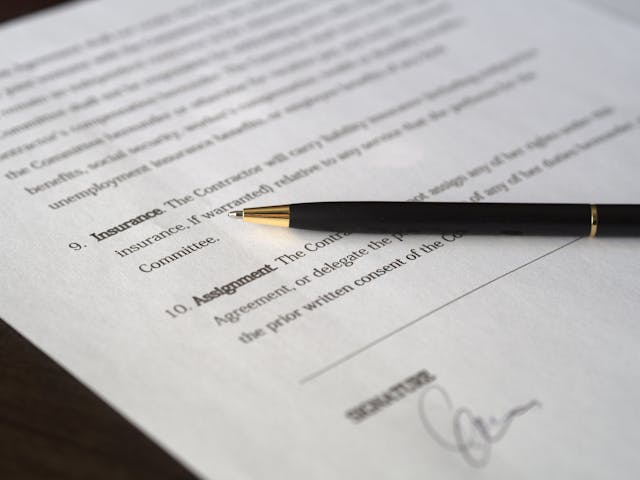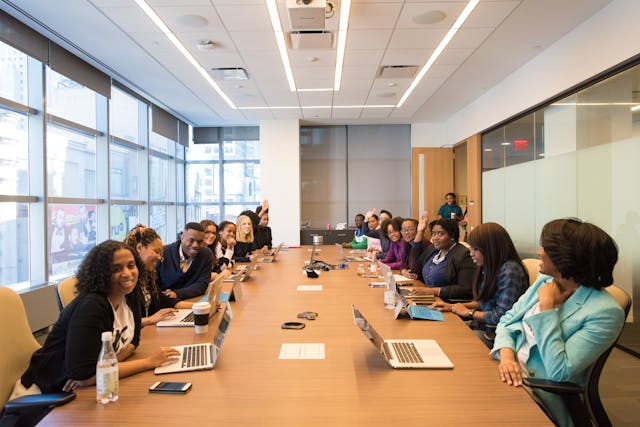The United States, renowned for its economic stability and exceptional career growth opportunities, attracts individuals from Nigeria and across the globe who seek both financial security and career advancement. Pursuing U.S. residency, however, often requires overcoming significant visa challenges especially when it comes to securing the coveted U.S. visa sponsorship.
If you’re considering pursuing your goals in the U.S. as a permanent resident or temporary resident, you’re likely aware that obtaining a visa can be a complex and challenging process.
This comprehensive guide covers high-demand visa types, eligibility criteria, and step-by-step processes to increase your chances of successfully obtaining U.S. visa sponsorship.
What Is the U.S. Visa Sponsorship All About?
U.S. visa sponsorship commonly referred to as work visa sponsorship, is a critical process that enables foreign nationals to live and work in the United States for a defined period. This process is essential for high-paying, employment-based visas like the H-1B and comprehensive U.S. green card sponsorship, providing a proven pathway for qualified professionals to enhance the U.S. economy while also supporting permanent residency applications and expedited immigration processing.
Typically, a U.S.-based employer, educational institution, or family member supports the foreign national’s visa application. Whether addressing high-demand work sectors or family reunification programs, these entities are at the forefront of advanced immigration solutions. By endorsing the application through work visa sponsorship, the U.S. organization confirms that the sponsored individual will comply with U.S. immigration laws and will not impose a public financial burden—crucial for high-salary roles and fast-track permanent residency.
Sponsors must demonstrate a legitimate relationship with the applicant, be it an employer-employee agreement or a verified family connection. The sponsorship process involves submitting a detailed petition to U.S. Citizenship and Immigration Services (USCIS) along with essential supporting documents such as employment contracts, job itineraries, and proof of professional qualifications. This detailed documentation is vital for categories like L-1 intracompany transfer visas or EB-2 advanced degree visas, where eligibility is closely linked to specialized skills and job roles.
The obligations for sponsors include ensuring that the applicant has the necessary skills for the role, offering competitive wages in line with U.S. standards, and confirming that the individual will return to their home country if required. In cases of family-based sponsorship, the sponsor must also validate a genuine familial relationship and provide financial support, which is fundamental for green card sponsorship and permanent residency applications.
By following these comprehensive guidelines, both employment-based and family-based sponsors facilitate a secure, legally compliant pathway for foreign nationals. Moreover, with an increasing focus on investment immigration opportunities and premium visa service providers, this streamlined process continues to attract top U.S. immigration attorneys and experts, making it a cornerstone of advanced immigration solutions for fast-track permanent residency.
Before You Continue Reading This Guide, Check Out These Links And Tell Me Your Thoughts In The Comment Section Below
Types of High-Value $80,000 U.S. Visa Sponsorship Opportunities
With demand rising for specialized skills and family reunification in the United States, various U.S. visa sponsorship types valued at $80,000 or more are now available. These sponsorships range from family-based green card sponsorships to employment-based visa sponsorships for high-demand sectors and offer significant benefits for both applicants and sponsors.
Here’s an in-depth look at the main types of high-value U.S. visa sponsorships that could attract competitive bids from advertisers.
1. Family-Based Green Card Sponsorship for U.S. Immigration
Family-based visa sponsorship enables U.S. citizens or lawful permanent residents (green card holders) to sponsor close family members for U.S. immigration and green card sponsorship. This type of sponsorship, rooted in the principle of family reunification, helps families stay together and provides U.S. permanent residency to foreign nationals.
- Eligibility: U.S. citizens can sponsor immediate family members, including spouses, children under 21, and, in some cases, siblings and parents. Green card holders can sponsor their spouses and unmarried children under 21.
- Process: The sponsor files a petition with U.S. Citizenship and Immigration Services (USCIS), providing proof of the familial relationship and demonstrating the financial stability to support the applicant.
2. Employment-Based Visa Sponsorship for High-Paying Jobs
Employment-based sponsorship is among the most sought-after types of U.S. visa sponsorship. This type of sponsorship supports high-income opportunities in high-demand sectors like technology, healthcare, engineering, and finance by attracting foreign talent to fill labor gaps in the U.S. workforce.
- Types of Employment-Based Visas: Includes H-1B visas for specialty occupations, L-1 visas for intracompany transfers, TN visas for NAFTA professionals, E-2 investor visas, and EB-1, EB-2, and EB-3 visas for priority and skilled workers.
- Process: Employers in the U.S. file a petition with USCIS, showing that no qualified U.S. workers are available for the position and providing evidence of the foreign worker’s expertise and job offer.
3. Financial Sponsorship for Humanitarian and Refugee Programs
Financial sponsorship is essential for humanitarian programs designed to offer protection to individuals facing crises due to displacement, natural disasters, or human rights concerns. Humanitarian sponsorships through refugee resettlement, asylum programs, and Temporary Protected Status (TPS) offer pathways to stability in the United States.
- Eligibility: Individuals or organizations can sponsor foreign nationals through programs such as refugee resettlement and asylum to provide safe haven and financial backing.
- Process: Sponsors file a petition with USCIS, showing that the individual meets humanitarian requirements and will have adequate support during their stay.
4. Education-Based Visa Sponsorship for International Students
Education-based sponsorship offers opportunities for international students to study in the U.S. through visas like the F-1 visa for degree programs and the J-1 visa for exchange initiatives. U.S. educational institutions often sponsor students who demonstrate financial resources and have been accepted to a Student and Exchange Visitor Program (SEVP)-certified institution.
- Eligibility: Students accepted into a SEVP-certified U.S. institution with the necessary financial resources qualify for F-1 sponsorship, while J-1 visas cover education, research, and cultural exchange.
- Process: U.S. institutions sponsor students, facilitating the USCIS visa application and often including scholarships or other financial support.
How to Find a U.S. Visa Sponsorship
Finding a $20,000 U.S. visa sponsorship may be challenging, but several high-yield strategies can increase your chances:
- Employment-Based Visa Sponsorship: Large U.S. companies like Amazon, Microsoft, IBM, and Accenture frequently sponsor H-1B visas for skilled professionals in high-demand sectors like technology and engineering. Researching top H-1B sponsors via the USCIS database is a good start.
- University Resources: Many universities help international students connect with companies offering visa sponsorship, especially in STEM fields. Utilize your career department or international student office for potential leads.
- Networking for Sponsorship: Attend career fairs and industry events, and use LinkedIn to connect with employers known for visa sponsorships. Many roles with H-1B sponsorship are filled through referrals, so leveraging your network is essential.
- Immigration Attorneys and Consultants: Consulting an immigration attorney can improve your chances by helping you understand U.S. visa requirements and refine your application strategy.
By focusing on employment sponsorship, university resources, networking, and legal support, you can enhance your opportunity to secure a high-value visa sponsorship in the U.S.
General Requirements for Securing a $80,000 U.S. Visa Sponsorship
To qualify for a $20,000 U.S. visa sponsorship, applicants must meet a set of eligibility criteria that apply to most U.S. visas, ensuring they are prepared to live and work in the United States. Here are the essential requirements:
- Age Requirement: Applicants must generally be at least 18 years old unless applying for a student visa or traveling with a guardian.
- Educational Background: For employment visas like the H-1B visa, a bachelor’s degree or equivalent is typically required.
- Relevant Work Experience: Applicants, such as those seeking an L-1 visa, need relevant work experience, often one year with the sponsoring employer.
- English Proficiency: Most visa applicants must demonstrate English language proficiency.
- Health Requirements: A medical exam by a designated U.S. civil surgeon is often required to meet health standards.
- Character and Legal Background: Applicants should have no criminal convictions or issues that could affect eligibility.
- Financial Resources: Evidence of sufficient financial resources, typically at least $20,000 to cover expenses, is required to avoid becoming a public charge.
- Strong Ties to Home Country: Proof of ties, such as property or family, helps confirm the applicant will return after the visa expires.
- Application Process: Complete a visa application with all necessary supporting documents and fees.
- Consular Interview: Applicants may need to attend an interview at a U.S. embassy or consulate.
For specific visas, such as the H-1B visa (requires a job offer), L-1 visa (requires intracompany transfer), or F-1 visa (requires acceptance into a U.S. institution), consult with an immigration lawyer or check official U.S. government resources to ensure compliance with detailed requirements.
Application Guide for the U.S. Visa Sponsorship
There are no two-way guides to follow when applying for US visa sponsorship, no matter what type you are applying for.
So, depending on the type you need, here are a few steps to follow:.
Step 1: Determine your eligibility
Before starting the application process, you must determine your eligibility for the U.S. visa sponsorship.
This involves reviewing the eligibility criteria for the specific type of visa you’re applying for and ensuring you meet the necessary qualifications and requirements.
Take the time to review the eligibility criteria carefully, as this will help you avoid any potential issues or delays in the application process.
Make sure you understand the requirements and that you have all the necessary documents and information before proceeding with your application.
Step 2: Gather the Required Documents
Once you’ve determined your eligibility, it’s time to gather all the required documents.
These may include your passport, birth certificate, marriage certificate (if applicable), divorce or death certificate (if applicable), proof of financial resources, proof of language proficiency (if applicable), academic records (if applicable), and a job offer letter (if applicable).
Make sure you have all the necessary documents and that they are up-to-date and valid. If you’re missing any documents, take the time to obtain them before proceeding with your application. This will help ensure a smooth and efficient application process.
Step 3: Fill out the application form.
Next, you’ll need to fill out the application form.
This can be done online or through a paper application.
Make sure you download and complete the relevant application form (e.g., DS-160 for non-immigrant visas, Form I-130 for family-based visas) and ensure you answer all questions truthfully and accurately.
Take your time when filling out the application form, as any errors or inaccuracies can lead to delays or even rejection of your application.
Step 4: Pay the application fee.
After completing the application form, you’ll need to pay the required application fee.
This fee varies depending on the type of visa you’re applying for, so make sure you check the correct fee amount before submitting your application.
Currently, the application fee is $160 for non-immigrant visas and $535 for family-based visas but we can say that for now. It’s important that you verify first.
Additionally, ensure you keep a receipt as proof of payment, as you may need to provide this during the application process.
Step 5: Submit Your Application
Once you’ve completed the application form and paid the application fee, it’s time to submit your application and supporting documents to the relevant U.S. embassy or consulate.
Make sure you submit all required documents and information and that everything is accurate and complete.
If you’re submitting your application in person, make sure you attend any scheduled interviews or biometrics appointments.
Step 6: Wait for Processing
After submitting your application, all you can do is wait for processing.
This can take several months, so be patient and don’t worry if you don’t hear back right away.
If additional information or evidence is required, you’ll be notified and given the opportunity to provide it.
Once your application is approved, you’ll receive your visa and be able to travel to the United States.
Step 7: Receive Your Visa
If your application is approved, you’ll receive your visa and be able to travel to the United States.
Make sure you understand the terms and conditions of your visa, including any restrictions or requirements.
If you have any questions or concerns, don’t hesitate to contact the U.S. embassy or consulate where you submitted your application.
Ensure you comply with all visa conditions and regulations, as failure to do so can result in serious consequences, including visa revocation or even deportation.
What Are the Easiest Jobs to Get with $80,000 U.S. Visa Sponsorship in the U.S., and What Are Their Annual Salary Ranges?
Navigating the job market in the U.S. can be challenging, especially when considering visa sponsorship. However, several job sectors are more open to sponsoring visas, especially for positions that are in high demand or require specialized skills. Let’s explore some of these roles and their potential salary ranges.
1. Healthcare
- Registered Nurse: $60,000 – $110,000
- Physician/Surgeon: $150,000 – $300,000+
- Physical Therapist: $70,000 – $100,000
- Pharmacist: $90,000 – $130,000
- Medical and Health Services Manager: $80,000 – $150,000
The healthcare sector in the U.S. always needs qualified nurses. Registered Nurses (RNs) often find it easier to secure visa sponsorship due to the ongoing demand in hospitals, clinics, and other healthcare facilities.
2. Technology
- Software Developer: $80,000 – $120,000
- Data Scientist: $90,000 – $130,000
- IT Manager: $100,000 – $150,000
- Cybersecurity Analyst: $70,000 – $120,000
- Network Administrator: $60,000 – $90,000
The tech industry is booming, and there’s a high demand for skilled software developers. Companies in this sector are often willing to sponsor visas for talented individuals, making it one of the easier pathways to gain employment and sponsorship in the U.S.
3. Education
- K-12 Teacher: $40,000 – $70,000
- Postsecondary Teacher (College/University): $50,000 – $100,000+
- School Administrator: $70,000 – $120,000
- Special Education Teacher: $45,000 – $75,000
- Instructional Coordinator: $60,000 – $90,000
Education is another sector with significant opportunities. Teachers, especially those specializing in STEM (Science, Technology, Engineering, and Mathematics) subjects or special education, have a higher chance of receiving visa sponsorship.
4. Engineering
- Mechanical Engineer: $70,000 – $100,000
- Civil Engineer: $70,000 – $110,000
- Electrical Engineer: $75,000 – $120,000
- Software Engineer: $80,000 – $130,000
- Chemical Engineer: $75,000 – $115,000
Mechanical engineers have a strong demand in industries such as manufacturing, automotive, and aerospace. Companies in these sectors frequently offer visa sponsorships to attract skilled engineers.
Disclaimer: Salary figures are estimates and may vary by location, experience, and employer. Please verify with current listings or official resources for accurate information.
Conclusion
The visa sponsorship procedure may appear confusing, but getting advice from experienced immigration professionals can help you avoid stress and manage the system efficiently.
The $80,000 US visa sponsorship is a great opportunity for individuals wishing to enter and remain in the United States for a specific period.
Whether it’s for work, study, or family reasons, this visa sponsorship provides a pathway for individuals to achieve their goals and dreams.
By understanding the general requirements and specific requirements for the type of visa being applied for, applicants can increase their chances of success.



